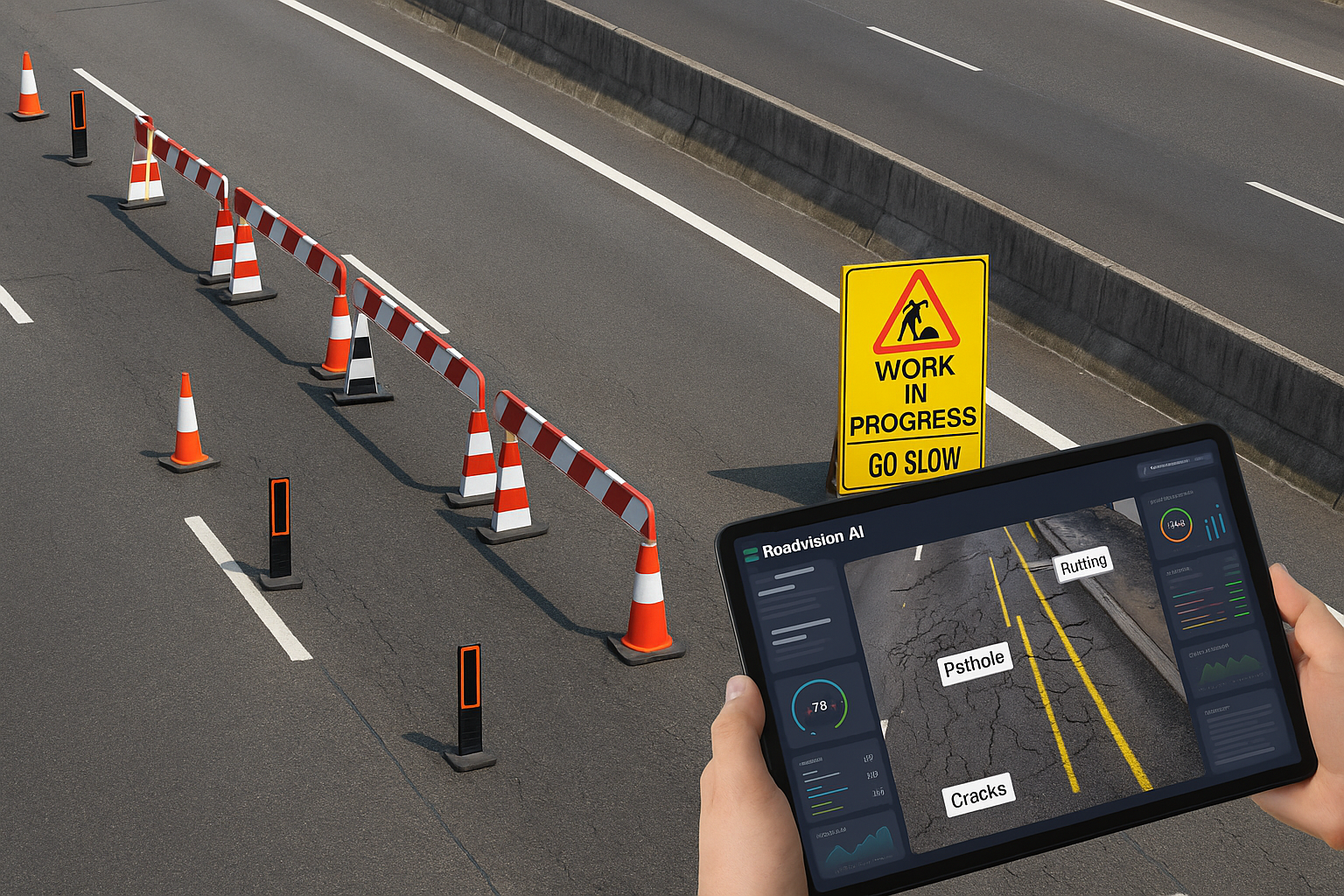Contact Us
RoadVision AI
Private Limited
Office No. 308 & 310, B Block
Ansal Chamber - 1, Bhikaji Cama Place,
Near Engineers India Limited (EIL) Bhawan, New Delhi - 110066
© 2024 | RoadVision AI | All rights reserved
Road maintenance is a necessary but potentially hazardous activity—posing risks to both workers and road users. The Indian Roads Congress (IRC) Code 67 outlines a detailed framework for road markings and safety signage, especially during temporary operations like repair, resurfacing, and maintenance. By complying with IRC 67 and integrating AI-powered solutions like RoadVision AI, agencies can ensure both compliance and cutting-edge safety outcomes.

Improper traffic control and lack of visibility during maintenance are major causes of road accidents. Safety begins with clear guidance to road users, which is why IRC 67 lays out precise standards for temporary signs, markings, and channelizing devices. This not only protects workers but also maintains safe, smooth traffic flow.
As per IRC 67, temporary road signs must be placed well in advance of the maintenance zone. The placement depends on road classification:
These signs must be retro-reflective, clearly legible, and properly maintained throughout the maintenance period.
The code prescribes the use of cones, bollards, tubular markers, and barricades to guide traffic and cordon off work zones. These must be:
Temporary edge lines, center lines, and directional arrows should be used in case of detours or lane shifts. IRC 67 specifies using removable paints or tapes that adhere to surface conditions during repair periods but can be taken off easily after the work is done.
While IRC 67 deals with visual and physical control elements, modern safety practices incorporate digital inspection and monitoring. RoadVision AI enhances this by:
By combining IRC 67 mandates with AI-supported visual analysis, RoadVision AI enables proactive, data-backed safety implementation.
Roadwork zones should implement a three-zone layout:
Proper spacing of traffic signs, lane tapering using cones, and work zone protection using crash barriers or sandbags are mandated. For two-lane roads, controlled one-way traffic with flagmen is encouraged. On multi-lane highways, shoulder closures or lane drops with prior marking are preferred.
Though IRC 67 primarily focuses on signage and markings, it indirectly contributes to workforce safety by:
Following IRC Code 67 guidelines for road markings and safety devices during maintenance significantly enhances both operational efficiency and worker safety. When paired with RoadVision AI’s intelligent road inspection capabilities, agencies can deliver safer and smarter road maintenance with full regulatory compliance.
RoadVision AI is revolutionizing roads AI and transforming infrastructure development and maintenance with its innovative solutions in AI in roads. By leveraging Artificial Intelligence, digital twin technology, and advanced computer vision, the platform conducts thorough road safety audits, ensuring the early detection of potholes and other surface issues for timely repairs and improved road conditions. The integration of potholes detection and data-driven insights through AI also enhances traffic surveys, addressing congestion and optimizing road usage. Focused on creating smarter roads, RoadVision AI ensures compliance with IRC Codes, empowering engineers and stakeholders to reduce costs, minimize risks, and elevate road safety and transportation efficiency.
IRC Code 67 specifies requirements for temporary road signs, markings, and traffic control devices to ensure safety during road maintenance.
RoadVision AI uses AI and computer vision to detect defects and recommend optimized placement of IRC 67-compliant traffic control devices.
As per IRC 67, temporary edge lines, lane arrows, and chevron markings are used, which RoadVision AI can digitally overlay for planning.